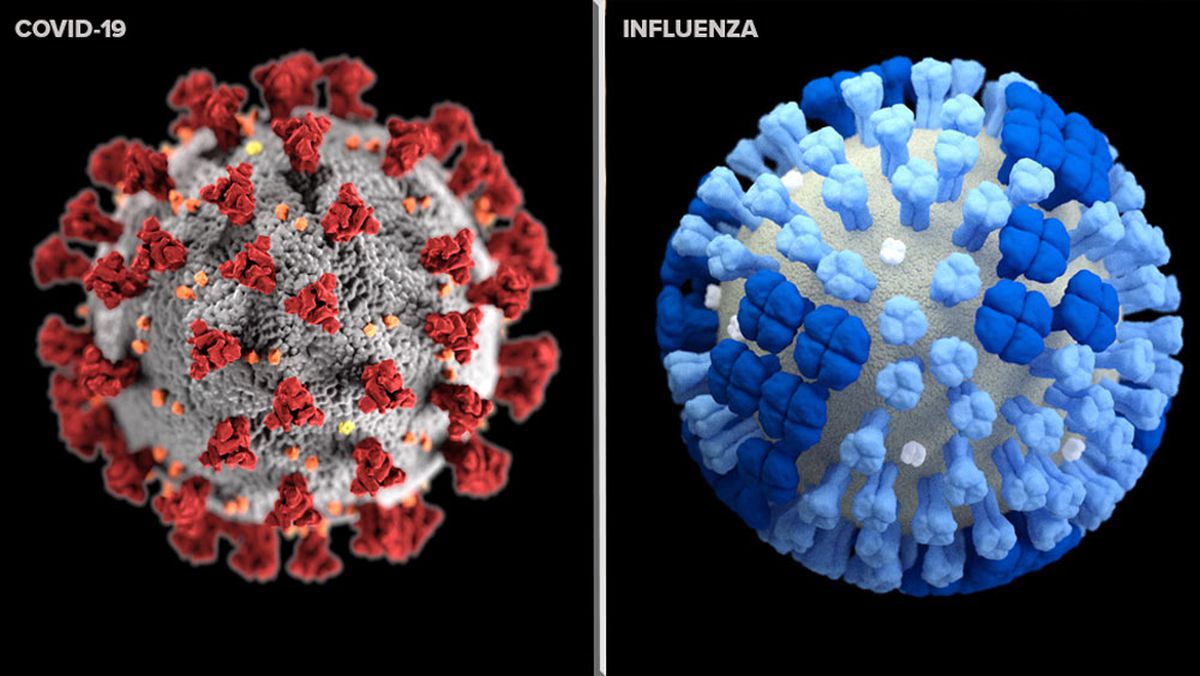
How Is COVID Different from the Flu?
The COVID-19 pandemic has caused a great deal of disruption and confusion for a number of reasons. It comes as no surprise when you combine the novel nature of the coronavirus and the drastic ways less-than-qualified voices echo on social media, that we’ve seen a lot of armchair epidemiologists crop up over the past six months.
Indeed, if you’ve spent any significant amount of time on Facebook recently, you’ve probably seen at least one person claiming that COVID-19 is “no different from the flu.” While we are still in the process of learning about the way the coronavirus spreads and affects the body, it has become abundantly clear to researchers and public health officials that this pandemic is a measurably different animal from your average flu season. Here are some of the key similarities and differences between the coronavirus and influenza.
Symptoms
The symptoms present in a nearly identical manner due to the two viruses being a part of the same viral family. Like regular strains of influenza, the coronavirus may cause fever, cough, aches, vomiting, and diarrhea. Pneumonia may emerge as a result of either, and
Both viruses can have symptoms that range from mild to serious and potentially fatal.
However, there are also identifiable differences between the ways that these two viruses present themselves as well. COVID-19 is more likely to be present and communicable with no apparent symptoms, but in other cases results in loss of smell and taste, which does not occur in the case of the common flu.
Transmission & Prevention
One of the major similarities between the coronavirus and the flu the way they spread from one person to another. Both are spread through respiratory droplets which may hang in the air in unventilated areas and infect other people, and you can pass on infection of either virus before knowing that you are sick.
By the same token, many of the preventive measures for the spread of COVID-19 and flu are the same – mask-wearing, hand-washing, social distancing, and covering your mouth while coughing or sneezing are important to limit the transmission of the flu and coronavirus alike.
In terms of prevention, the biggest difference between coronavirus and the flu is in the existence of a flu vaccine. While researchers are working to create a vaccine for COVID-19, none has yet been discovered. On the other hand, flu shots are readily available at LabFinder. Some research suggests that patients who have received a recent flu vaccine are less likely to develop severe symptoms from the coronavirus, but this relationship is still not fully understood.
Death Rate
As of this writing, the the World Health Organization states that the worldwide death toll from coronavirus is approaching one million fatalities, compared to an annual 290,000 to 650,000 flu deaths. Both viruses are more likely to be severe in older adults and those with pre-existing heart and respiratory conditions, but due to a combination of factors resulting from the novelty of the virus and the lack of a vaccine, COVID is currently a greater danger.
The fact that our understanding of the coronavirus is still developing also means that we can’t currently anticipate the long-term effects on heart and respiratory health which may linger even after the illness has abated.
Testing for COVID-19
One of the primary dangers of the coronavirus is that it can be transmitted even in cases where the patient is not experiencing any symptoms. Because of this, it’s extremely important to make sure you get tested if you learn that you have come in contact with someone who has the virus. LabFinder offers a range of COVID tests which include nasal swab testing to learn if you are currently infected, COVID antibody testing to find out whether you have previously had the virus, and rapid COVID testing which will return your results in just a matter of minutes as opposed to the usual 2-3 days.




Andy Alem
The LabFinder Editorial Team is behind The Illuminator and The Insider, LabFinder’s consumer and business blogs.
Dr.Robert Segal
Dr. Segal is CEO and co-founder of LabFinder, as well as a board-certified cardiologist. He began practicing medicine in 2002 and has founded several businesses, including Medical Offices of Manhattan and Manhattan Cardiology.